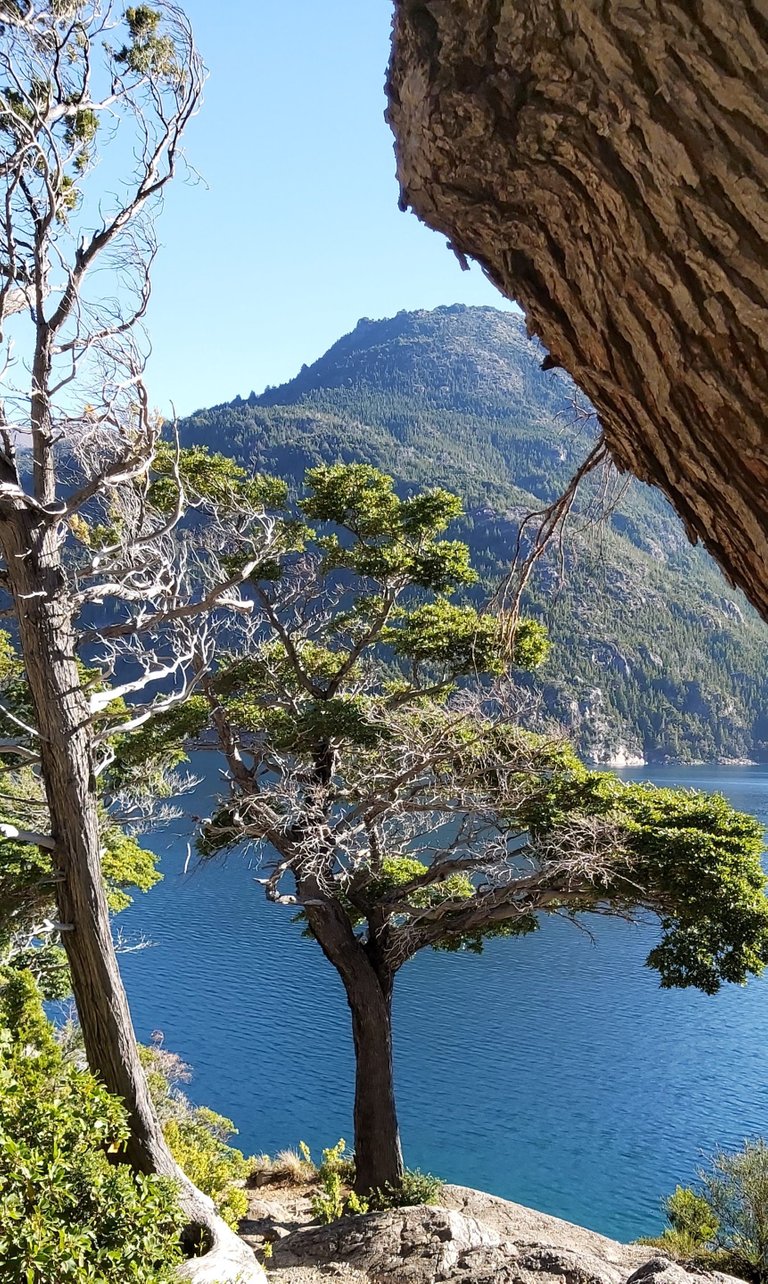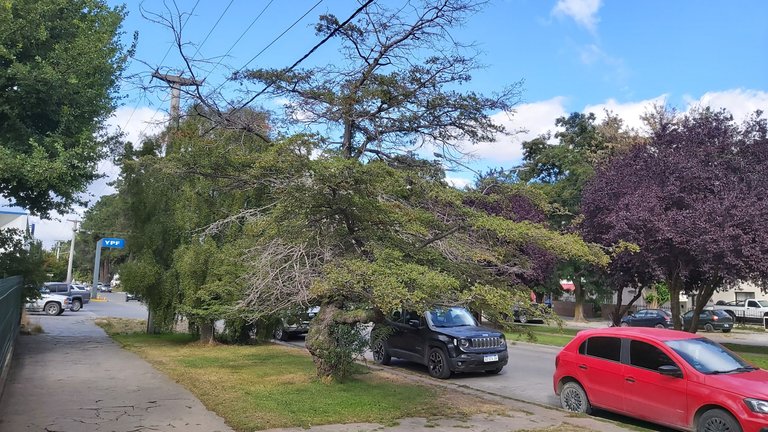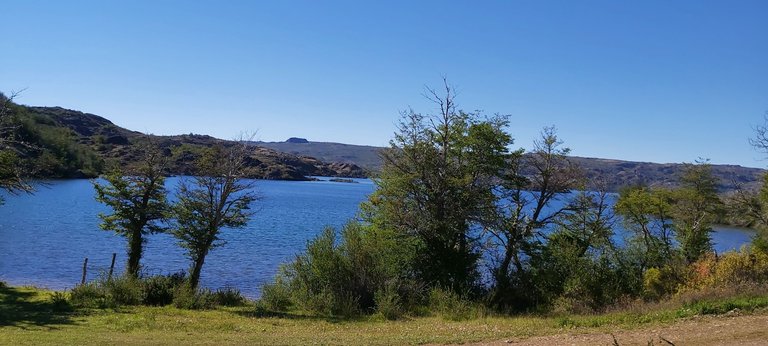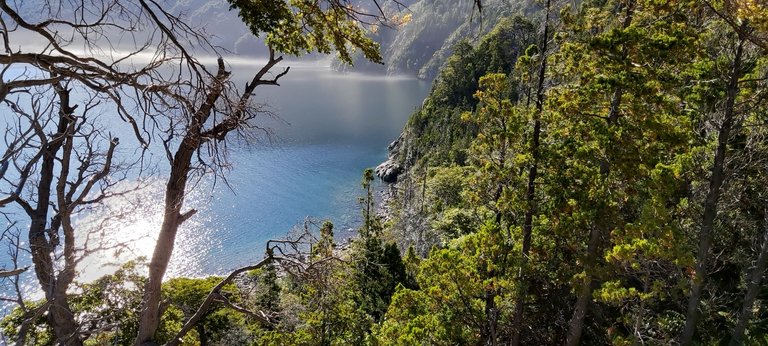Nothofagus (ESP-ENG)

Desde que vivo en la Patagonia, hace ya más de 20 años, mis tareas de profesor de escuelas secundarias me deja tiempo libre para dedicarme a estudiar e investigar sobre la naturaleza que me rodea, entre los temas que he tratado de entender están la geología, la flora y la fauna de la región. Ya he hablado con anterioridad sobre rocas y algo de la fauna local, ahora es el turno de la flora.
Las Nothofagus son el único género de la familia Notofagáceas del Orden Fagales y reúnen una serie de especies arbóreas originarias del hemisferio sur. En conjunto son conocidas como hayas del sur y están emparentadas con las hayas del hemisferio norte, aunque su nombre significa “falsas hayas”. En la actualidad está fuera de discusión que son originarias del sur de Sudamérica y de la península antártica y que cada uno saque sus propias conclusiones del porqué de la existencia de Notofagáceas en Australia, Nueva Zelanda y Nueva Guinea además de Chile y Argentina.
Las especies se confunden un poco en cuanto a su nombre común ya que son denominadas en algunos casos de forma diferente en Argentina y Chile.
La que a mi más me llama la atención es la Lenga (nothofagus pumilio) que recibe varios nombres entre los que se encuentran el de Roble de Tierra del Fuego, Guindo de Magallanes, Roble blanco y otros en leguas indígenas. Su particularidad más distintiva es su adaptabilidad a los factores climáticos y a la latitud, dependiendo de ellos cambia de aspecto y tamaño, en ocasiones se hace difícil de identificarlo. Los hay de crecimiento achaparrado con hasta un metro de altura, generalmente cuando se ubica en las altas montañas, también existe una versión arbórea que puede llegar hasta los 30 metros de altura. En cualquiera de sus formas, el elemento distintivo son sus hojas dentadas que poseen un color verde oscuro e intenso en primavera y verano, tornándose en ocre y rojo en el otoño dotando al paisaje de una belleza inigualable. En su forma arbórea puede encontrarse entre los 600 y 1800 metros de altura y como achaparrado puede llegar hasta los 3300 metros de altura tapizando las laderas de las altas montañas.

Su función primordial es la de ser protectores de las cuencas de agua y su torrencialidad. Algo de gran importancia para la protección de poblaciones ubicadas sobre las laderas de los cerros, esto debería ser razón suficiente para prohibir su tala, lamentablemente todavía no hay una definición tajante al respecto aunque si existe algún tipo de permisos no del todo claros y justificados.
El coihue (nothofagus dombeyi) es otra especie arbórea dominante en el bosque andino patagónico, es una especie siempreverde y con regularidad se convierte en un árbol gigantesco que puede llegar a tener un tronco de más de dos metros de diámetro y hasta cuarenta y cinco metros de altura. Ideal para los dinosaurios herbívoros si existieran. Son muy exigentes con el suelo y la humedad por lo que solo se desarrollan en las partes bajas y con suave pendiente de las laderas de las montañas. Su madera es de excelente color y dureza y por ello es muy apreciada, por suerte su tala está bastante limitada ya que la mayoría de los bosques de coihue están dentro de los parque nacionales y por lo tanto más custodiados.

El Guindo (nothofagus betuloide) es otra de las especies de este género, es un árbol que puede alcanzar los veinticinco a treinta metros de altura con un denso follaje aunque a diferencia de la lenga sus hojas son perennes. Se encuentra en la parte más austral de la región conocida como bosques magallánicos, principalmente al sur del Lago Argentino y hasta la Tierra del Fuego.
El Ñire es la cuarta especie de seis que se encuentran en nuestra región, es un árbol de pequeñas dimensiones cuyas hojas también se tornan anaranjadas, rojas y ocre en el otoño, dotando a su área de dispersión de una singular y llamativa belleza.

Las últimas dos especies conocidas de nothofagus son el Raulí (nothofagus nervosa) y el Roble Pellín (nothofagus obliqua) ambos son árboles de gran porte que pueden llegar a medir hasta treinta y cinco metros de altura en condiciones climáticas y de humedad favorables. La madera del Raulí ha sido muy apreciada principalmente en la carpintería naval pero su escasa área de distribución ha necesitado la prohibición de su explotación para lograr su supervivencia, de hecho hay algunos planes para su reforestación que aun no se plasman en la realidad.

El Roble Pellín posee una madera semi pesada y resistente a la putrefacción por lo que también es apreciada en la carpintería naval, posee un área de influencia muy demarcada en la Patagonia norte, en la provincia de Neuquén y abarca gran parte del parque Nacional Lanín conviviendo con el Raulí, la Lenga, el Coihue y la Araucaria que no forma parte de la especie pero que está muy difundida en esa zona.
Motivado por la curiosidad y por las leyes de la naturaleza continúo investigando y aprendiendo sobre la Patagonia, sus orígenes, su flora y su fauna, un lugar privilegiado en el mundo; el que elegí para vivir.
Since I have lived in Patagonia for more than 20 years, my work as a secondary school teacher leaves me free time to dedicate myself to studying and researching the nature that surrounds me, among the topics that I have tried to understand our geology, the flora and fauna of the region. I have already spoken before about rocks and some of the local fauna, now it is the turn of the flora.
The Nothofagus is the only genus of the Notofagaceas family of the Fagales Order and brings together a series of tree species originating from the southern hemisphere. Together they are known as southern beeches and are related to the beaches of the northern hemisphere, although their name means "false beeches". At present, it is out of the question that they are native to southern South America and the Antarctic Peninsula and that each one draws their own conclusions as to why the Notofagáceas exist in Australia, New Zealand, and New Guinea as well as Chile and Argentina.
The species are somewhat confused about their common name as they are sometimes called differently in Argentina and Chile.
The one that most attracts my attention is the Lenga (nothofagus pumilio) which receives several names among which are Roble de Tierra del Fuego, Guindo de Magallanes, Roble Blanco, and others in indigenous leagues. Its most distinctive characteristic is its adaptability to climatic factors and latitude, depending on which it changes its appearance and size, sometimes it becomes difficult to identify it. There is squat growth up to one meter in height, generally, when it is located in the high mountains, there is also a tree version that can reach up to 30 meters in height. In any of its forms, the distinctive element is its toothed leaves that have a dark and intense green color in spring and summer, turning ocher and red in autumn, giving the unparalleled landscape beauty. In its arboreal form, it can be found between 600 and 1800 meters high and as a stocky tree, it can reach up to 3300 meters high covering the slopes of high mountains.
Its primary function is to be the protector of water basins and their torrentiality. Something of great importance for the protection of populations located on the slopes of the hills should be reason enough to prohibit its logging, unfortunately, there is still no clear definition in this regard, although there is some permit that is not entirely clear and justified.
The coihue (nothofagus dombeyi) is another dominant tree species in the Patagonian Andean forest, it is an evergreen species and regularly becomes a gigantic tree that can have a trunk of more than two meters in diameter and up to forty-five meters Tall. Ideal for herbivorous dinosaurs if they existed. They are very demanding with the soil and humidity, which is why they only develop in the lower parts and gently sloping slopes of the mountains. Its wood is of excellent color and hardness and for this reason, it is highly appreciated. Fortunately, its falling is quite limited since most of the coihue forests are within national parks and therefore more guarded.
The Guindo (nothofagus betuloide) is another of the species of this genus, it is a tree that can reach twenty-five to thirty meters in height with dense foliage, although unlike the beech its leaves are perennial. It is found in the southernmost part of the region known as the Magellanic forests, mainly south of Lago Argentino and as far as Tierra del Fuego.
The Ñire is the fourth species of six found in our region, it is a small tree whose holes also turn orange, red, and other in the fall, giving its dispersal area a unique and striking beauty.
The last two known species of nothofagus are the Raulí (nothofagus nervosa) and the Roble Pellín (nothofagus obliqua) both are large trees that can measure up to thirty-five meters in height in favorable climatic and humidity conditions. Raulí wood has been highly appreciated, mainly for shipbuilding, but its limited area of distribution has necessitated the prohibition of its exploitation in order to achieve its survival. In fact, there are some plans for its reforestation that have not materialized yet.
The Pellín Oak has a semi-heavy and rot-resistant wood, which is why it is also appreciated in naval carpentry, it has a very demarcated area of influence in northern Patagonia, in the province of Neuquén and covers a large part of the Lanín National Park coexisting with the Raulí, the Lenga, the Coihue and the Araucaria that is not part of the species but is widespread in that area.
Motivated by curiosity and by the laws of nature, I continue to investigate and learn about Patagonia, its origins, its flora and fauna, a privileged place in the world; the one I chose to live.
Congratulations @onlyfly! You have completed the following achievement on the Hive blockchain And have been rewarded with New badge(s)
Your next target is to reach 400 upvotes.
You can view your badges on your board and compare yourself to others in the Ranking
If you no longer want to receive notifications, reply to this comment with the word
STOPCheck out our last posts:
Support the HiveBuzz project. Vote for our proposal!